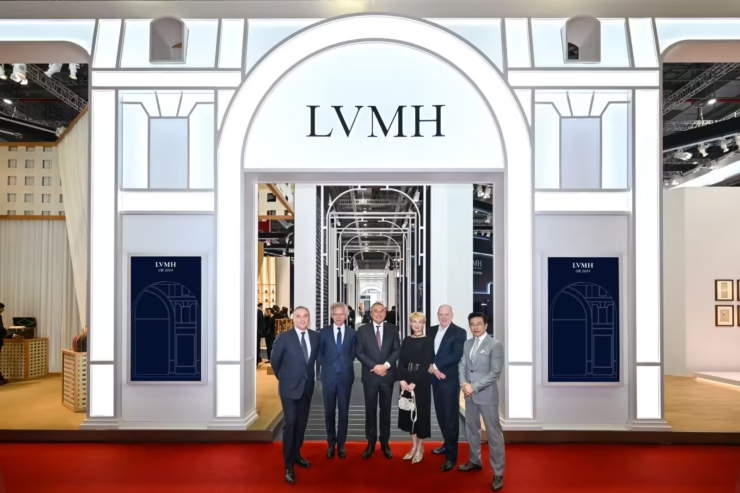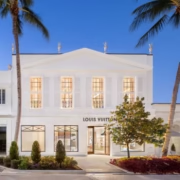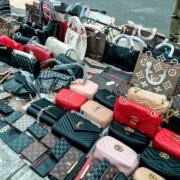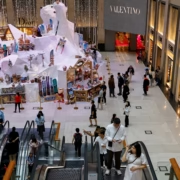economy

After two years of volatility, China is once again entering an expansion phase that is reshaping the global luxury landscape. In 2026, the country regains its position as one of the sector’s most powerful growth engines, driven by young consumers, a renewed appetite for premium experiences, and the rise of a new generation of local luxury brands.

The personal luxury goods market — including handbags, fashion, jewelry, beauty, watches and accessories — is expected to close 2025 at around €358 billion, slightly below 2024 levels. The analysis suggests that 2025 will be a year of stabilization after several cycles marked by price hikes, economic uncertainty and more cautious spending habits.

The global luxury and fashion industry enters 2026 facing an environment where long-established rules no longer apply. Market stability is shifting, consumers are becoming more complex, and brands must navigate a world where technology, wellbeing, creativity and efficiency intersect. McKinsey and The Business of Fashion identify ten forces that will guide this new stage.

After a decade of uninterrupted growth, the global luxury industry is entering a new cycle defined by prudence, redefined value, and long-term sustainability. According to McKinsey & Company’s State of Luxury 2025 report, annual growth for the sector is expected to slow to between 1% and 3% through 2027, signaling the end of the post-pandemic boom and the beginning of a more selective, value-driven era.

Luxury is no longer defined by what you own, but by what you experience. According to Euromonitor International and Bain & Company, the experiential luxury segment — including exclusive travel, hospitality, wellness, gastronomy, and immersive retail — grew 8% in 2025, reaching an estimated $103 billion.

The luxury industry is entering a phase of reflection. After years of record expansion driven by aspirational consumers, the younger generations —Gen Z and early millennials— are redefining their relationship with luxury. It is no longer about possession, but about justifying the value of every purchase.
According to the Bain-Altagamma 2025 report, the sector is experiencing a “healthy slowdown” after years of euphoria, showing flat or slightly negative growth. Luxury houses are recalibrating: focusing less on volume and more on purpose, profitability, and genuine emotional connection with the client.

The accessible luxury sector —that delicate balance between aspiration and attainability— is heading into a decisive week as Capri Holdings, Tapestry Inc., and Ralph Lauren Corporation prepare to unveil their latest quarterly results, offering valuable insight into the state of U.S. premium consumption.

Under CEO Benedetto Vigna, Ferrari maintains its guidance for the year, with operating margins above 30 %, confirming its status as the world’s most profitable car brand. Investors will closely watch updates on its electrification strategy, the new solar-powered Maranello plant, and the expansion of its high-margin Tailor Made customization program.

The announcement triggered a market-wide rally: LVMH shares soared as much as 14% on October 15, lifting the entire sector and adding roughly US $80 billion in market value to the STOXX Europe Luxury 10 Index, which tracks Europe’s leading luxury groups. Brands such as Hermès, Richemont, and Kering also rose between 5% and 8% in the wake of the news.

According to the official statement, the brands restricted independent retailers from setting their own prices or offering discounts, in an effort to preserve brand exclusivity and profit margins. The practice, which violates EU competition law, effectively prevented fair price competition and limited consumer choice.

The European luxury sector is experiencing a month of contrasts. While LVMH Moët Hennessy Louis Vuitton surprised markets with a return to growth in Q3 2025, driven by a rebound in Chinese demand, the European Commission has imposed heavy fines on Gucci, Chloé, and Loewe for retail price-fixing practices.

The global personal luxury market appears to have reached a decisive inflection point. After nearly a decade of uninterrupted growth, analysts now predict a 5% contraction in 2025, following the modest 2% decline already recorded in 2024. The slowdown marks the end of an era of effortless expansion and signals the beginning of a new phase defined by selectivity, authenticity, and purpose.

LVMH Moët Hennessy Louis Vuitton is set to release its third-quarter 2025 revenue after the Paris stock market closes on October 14, with a live audio webcast scheduled at 6:00 p.m. CET. According to the company’s investor relations site, all related materials will be made available just before the presentation.
This update comes at a delicate time for the luxury conglomerate. The spot price of gold reached a historic high of USD 4,078 per ounce on October 13, adding margin pressure to LVMH’s Watches & Jewelry division, which includes Tiffany & Co., Bulgari, Chaumet, and TAG Heuer.

Miami, October 8, 2025 — Amancio Ortega, through his real estate investment arm Pontegadea, has completed the purchase of the Sabadell Financial Center in Miami for approximately $274.4 million (around €236 million). Located at 1111 Brickell Avenue, the 31-story tower stands as one of the most prominent office buildings in the city’s financial district.












































